Sleep and Dreams
Anti-snoring Pillow


The original patent here has no suitable illustration of its product, so I've taken the liberty of having Copilot conjure up some images. Basically, the pillow would use Active Noise Control to cancel out the snores.


Posted By: Paul - Mon Jun 17, 2024 -
Comments (0)
Category: Inventions, Patents, Sleep and Dreams, Twenty-first Century, Cacophony, Dissonance, White Noise and Other Sonic Assaults
Fatigue Vaccine
I wonder what was this "vaccine against fatigue" that scientists in the 1920s thought they had discovered. Methamphetamine perhaps? I know that the Nazis thought it was an anti-fatigue wonder drug.More info: Robert Armstrong-Jones (wikipedia)
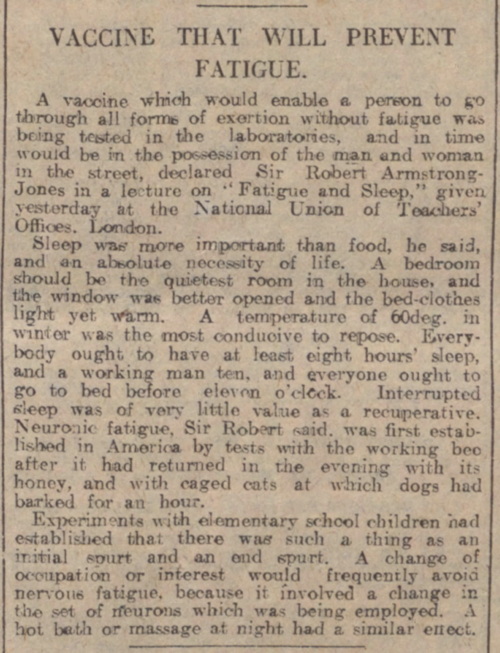
Nottingham Evening Post - Nov 29, 1923
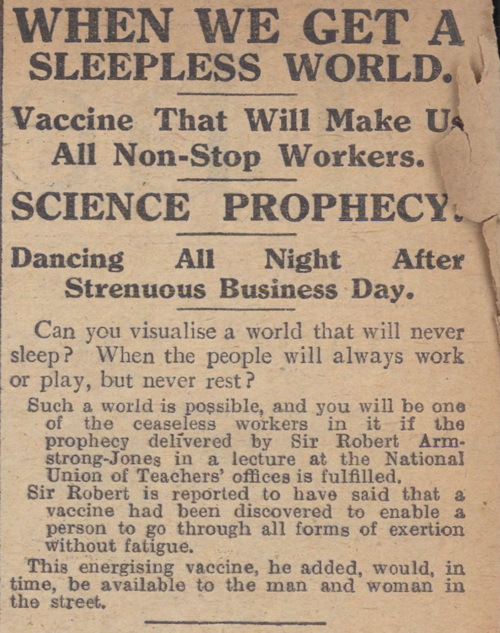
Daily Mirror - Nov 30, 1923
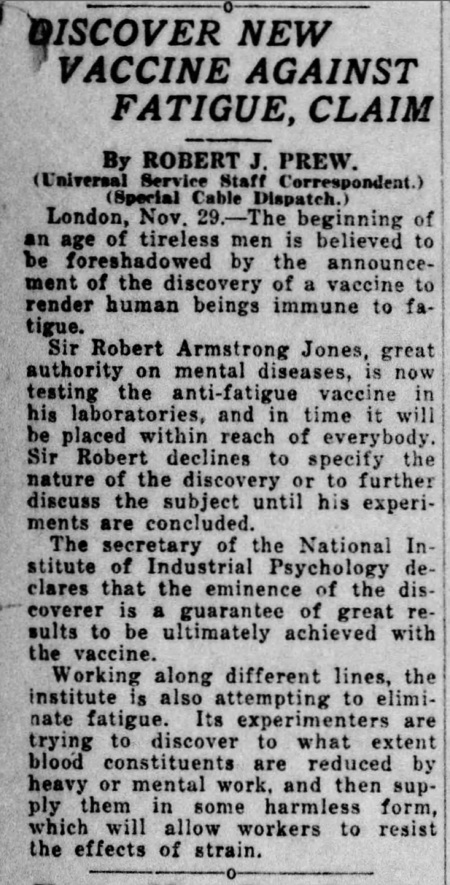
Shreveport Times - Nov 30, 1923
Posted By: Alex - Tue Feb 20, 2024 -
Comments (1)
Category: Science, Sleep and Dreams, 1920s
Somnambulist Bathing

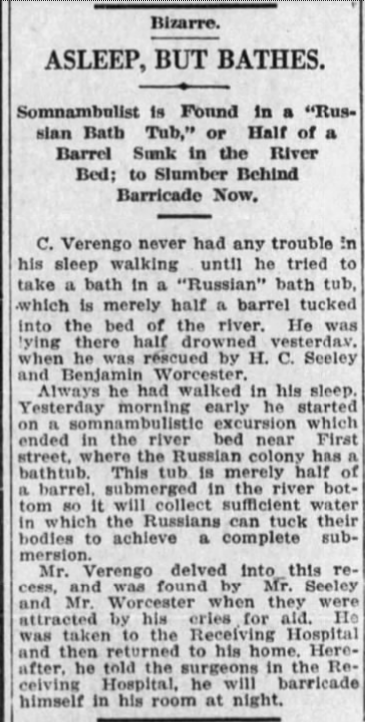
Posted By: Paul - Wed Nov 29, 2023 -
Comments (0)
Category: Hygiene, Sleep and Dreams, Danger, Risk, and Peril, 1910s
GiraffeNap
The GiraffeNap is "a nap box that proposes a 'standing sleep' style."It looks very similar to the upright Nap Boxes that we've previously posted about.
More info: GiraffeNap, Core77
Posted By: Alex - Wed Oct 11, 2023 -
Comments (2)
Category: Inventions, Sleep and Dreams
Result of artificial sleep in a biological experiment
In the 1950s, reports came out of the Soviet Union about an unusual experiment in which a dog's life was radically lengthened by putting it into an artificial sleep for three months.The research was done by S.N. Braines (I have no idea what "S.N." stands for). I believe that he reported his results in a 1952 article titled, "Result of artificial sleep in a biological experiment," published in a Soviet journal. But I can't be sure because I can't find the text of the article.
The results he achieved sound unlikely to me.
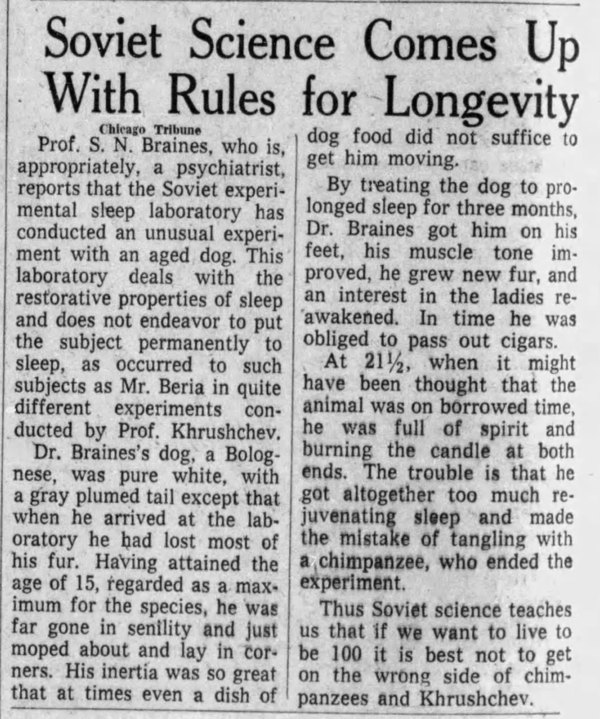
Omaha World-Herald - Oct 17, 1958
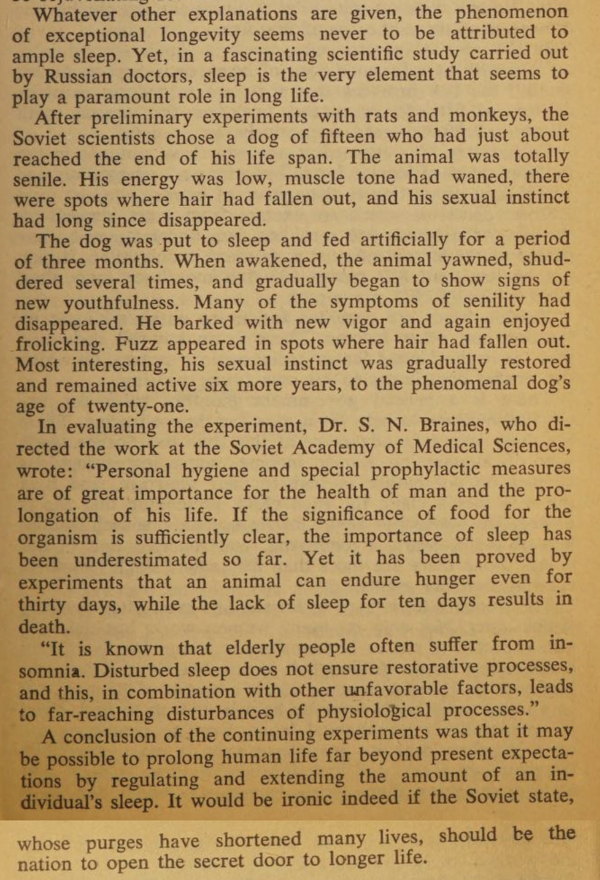
Text from Main Street, U.S.S.R. (1959), by Irving R. Levine
Posted By: Alex - Wed Jul 26, 2023 -
Comments (3)
Category: Sleep and Dreams, Experiments, Dogs, 1950s, Longevity
Follies of the Madmen #545
Sleepwear for hungry insomniacs.Several others in this series here.
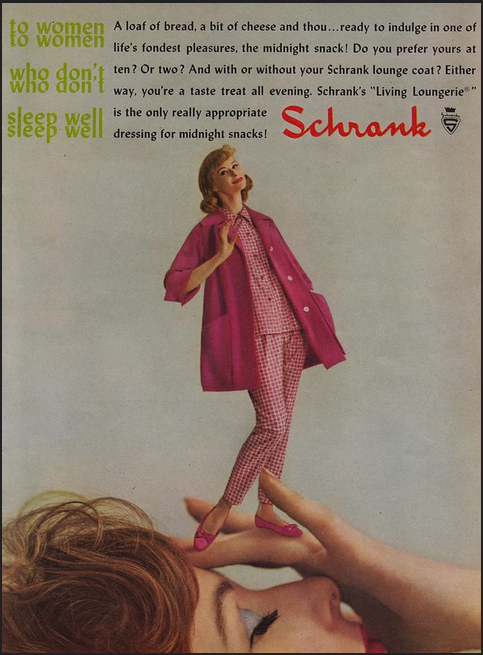
Posted By: Paul - Fri Oct 28, 2022 -
Comments (6)
Category: Fashion, Food, Sleep and Dreams, Advertising, Twentieth Century
Udon Noodle Blanket
Japanese spa chain Goku no Kimochi has created a blanket based on udon noodles. The first picture shows some udon noodles. The second and third photos show the blanket.The idea is that you can easily stick an arm or leg out through the 'noodles' if you feel hot. In this way, it is a "user-configurable blanket."
More info: Core77.com, goku-nokimochi.com
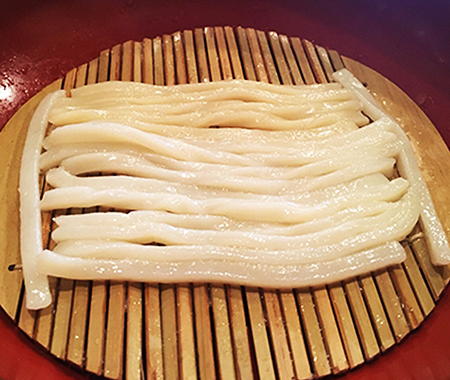
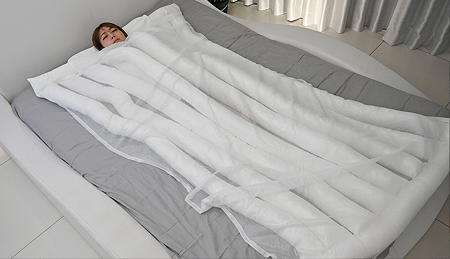
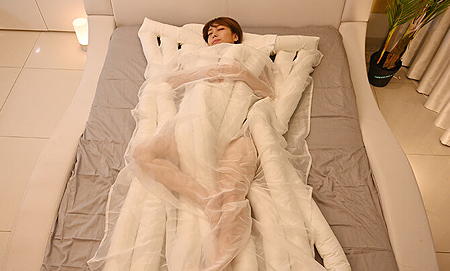
Posted By: Alex - Thu Sep 22, 2022 -
Comments (2)
Category: Sleep and Dreams
Nap Boxes
New from Japan: nap boxes. The idea is to discourage workers from locking themselves in toilet stalls to nap by instead offering them an upright container in which they can seal themselves and (somehow) nap.Reminds me of the Iron Maiden torture device from medieval times.
More info: Bloomberg
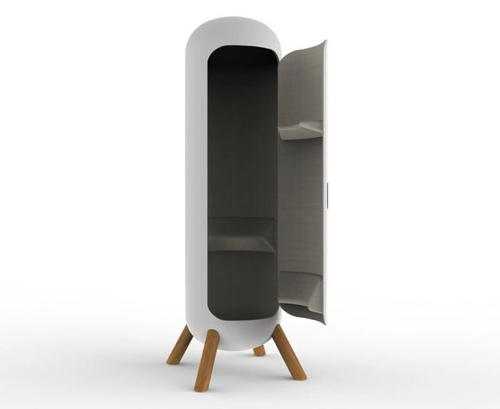
Posted By: Alex - Sat Jul 23, 2022 -
Comments (6)
Category: Furniture, Sleep and Dreams
By the Light of the Silvery Moon
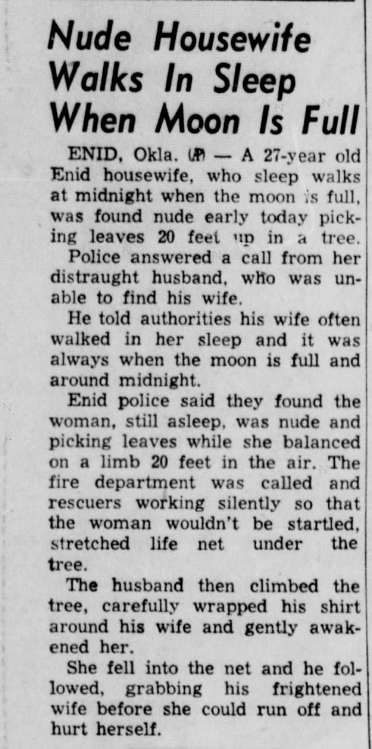
Source: The Escanaba Daily Press (Escanaba, Michigan) 30 Jun 1953, Tue Page 8
Posted By: Paul - Wed Aug 11, 2021 -
Comments (0)
Category: Public Humiliation, Sleep and Dreams, Public Indecency, 1950s
Staying awake at the wheel
Over the years, inventors have dreamed up a variety of ways to keep drivers awake while driving.In 1936, Carl Brown got a patent on a chin-operated alarm device. If a driver started to nod off, and his head fell forward, this would depress a trigger, setting off an electric bell that would wake him up. (Patent No. 2,066,092)
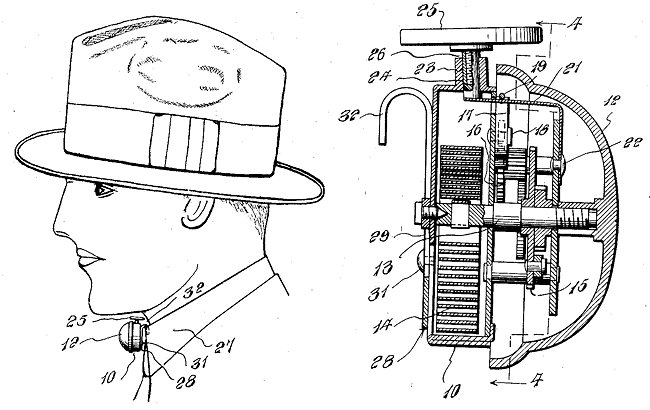
In 1940, Raymond Young had the idea that whenever a driver was feeling drowsy he could press a button on the steering wheel and this would squirt an aromatic spray in his face, waking him up. (Patent No. 2,199,060)
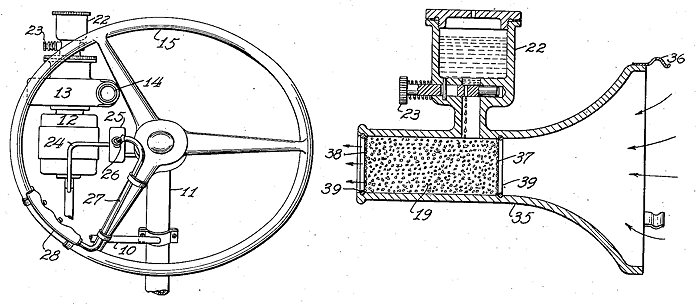
And just last month, Hyundai was granted a patent for a system that shoots ultrasonic beams at a driver's eyes when it senses he's falling asleep. (Patent No. 11007932)
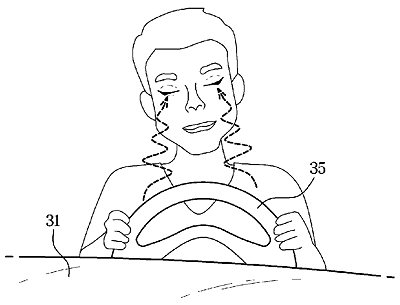
Posted By: Alex - Mon Jun 14, 2021 -
Comments (3)
Category: Inventions, Patents, Sleep and Dreams, Cars

| Who We Are |
|---|
| Alex Boese Alex is the creator and curator of the Museum of Hoaxes. He's also the author of various weird, non-fiction, science-themed books such as Elephants on Acid and Psychedelic Apes. Paul Di Filippo Paul has been paid to put weird ideas into fictional form for over thirty years, in his career as a noted science fiction writer. He has recently begun blogging on many curious topics with three fellow writers at The Inferior 4+1. Contact Us |




